Hoggs & Lamb recreates options of historic Babylon in Sydney restaurant
Recessed arches, free-standing stone plinths and hanging rooftop vegetation are designed to recall the traditional ruins of Babylon inside a restaurant and bar in Sydney.
The restaurant, which takes its title from the town of Babylon, is situated on the rooftop flooring of Westfield buying centre. Hogg & Lamb designed it with quite a few arches and niches from travertine and pure stone to recall the traditional metropolis.
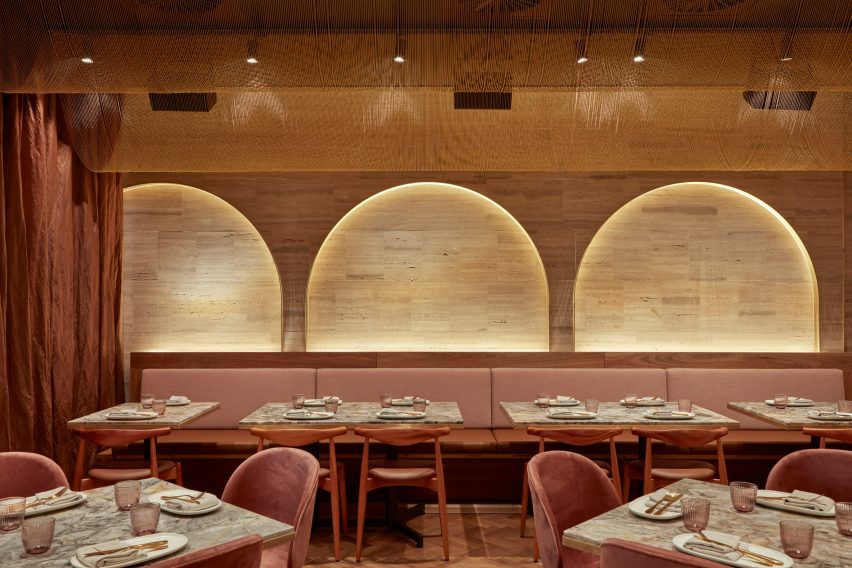
General Babylon has been organized as a miniature metropolis, with completely different zones designed as city districts containing enclosed teams of tables which can be the buildings.
“We researched Mesopotamian cities and paintings which helped affect the planning, the buildings, streets and arcades had been useful to create a locale, we had been carful to not make a ‘museum’, however reasonably a spot the place individuals can have enjoyable, loosen up even misbehave,” mentioned Hogg & Lamb co-founder Greg Lamb.
“Cities usually break down into quarters or districts every with their very own character, we tried to replicate this in the way in which the venue is deliberate by adjusting the amount and supplies of the varied areas,” he informed Dezeen.
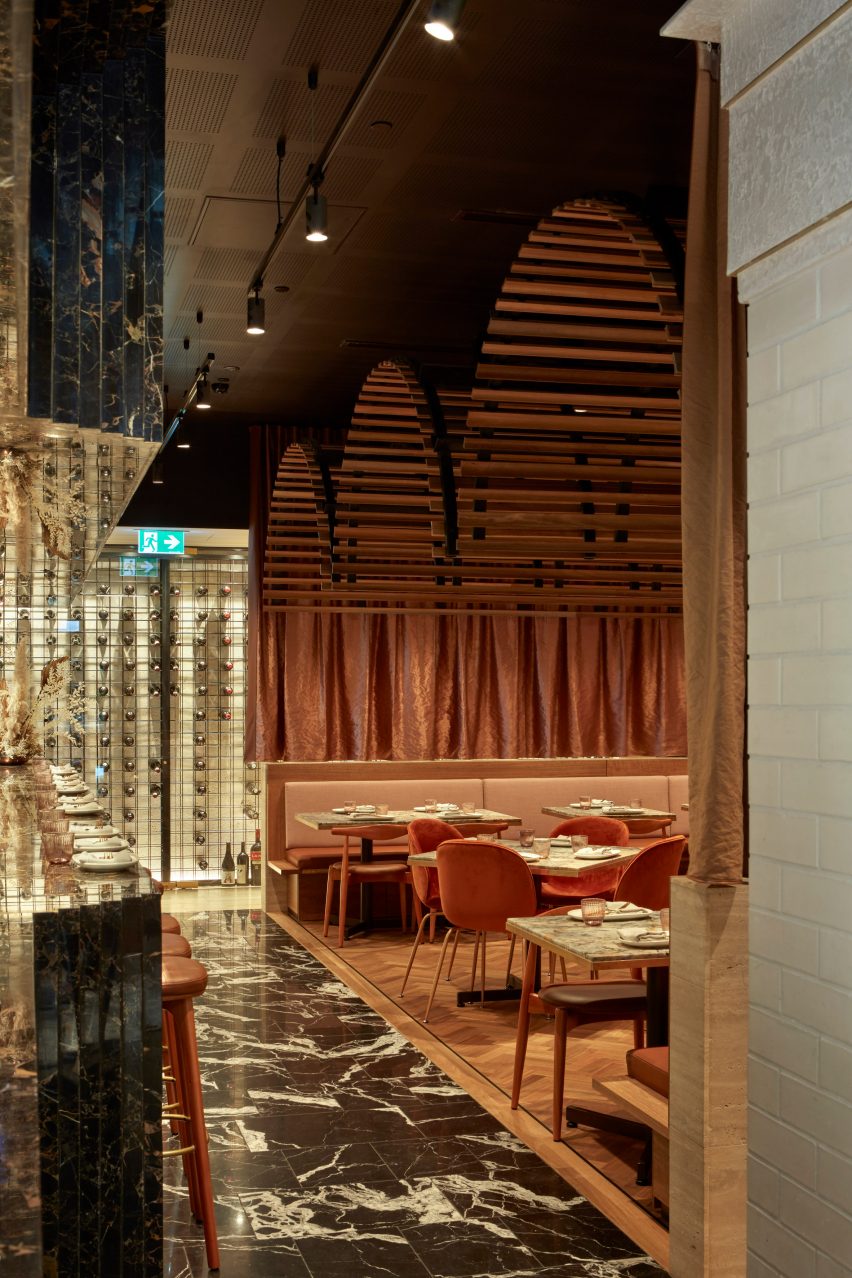
Blocks containing the central kitchen, the place Center-eastern delicacies is ready, and the bar spatially divide the ground space.
Roofs of the opposite buildings inside the restaurant are disconnected from the ceiling to allow vegetation to hold over the sides.
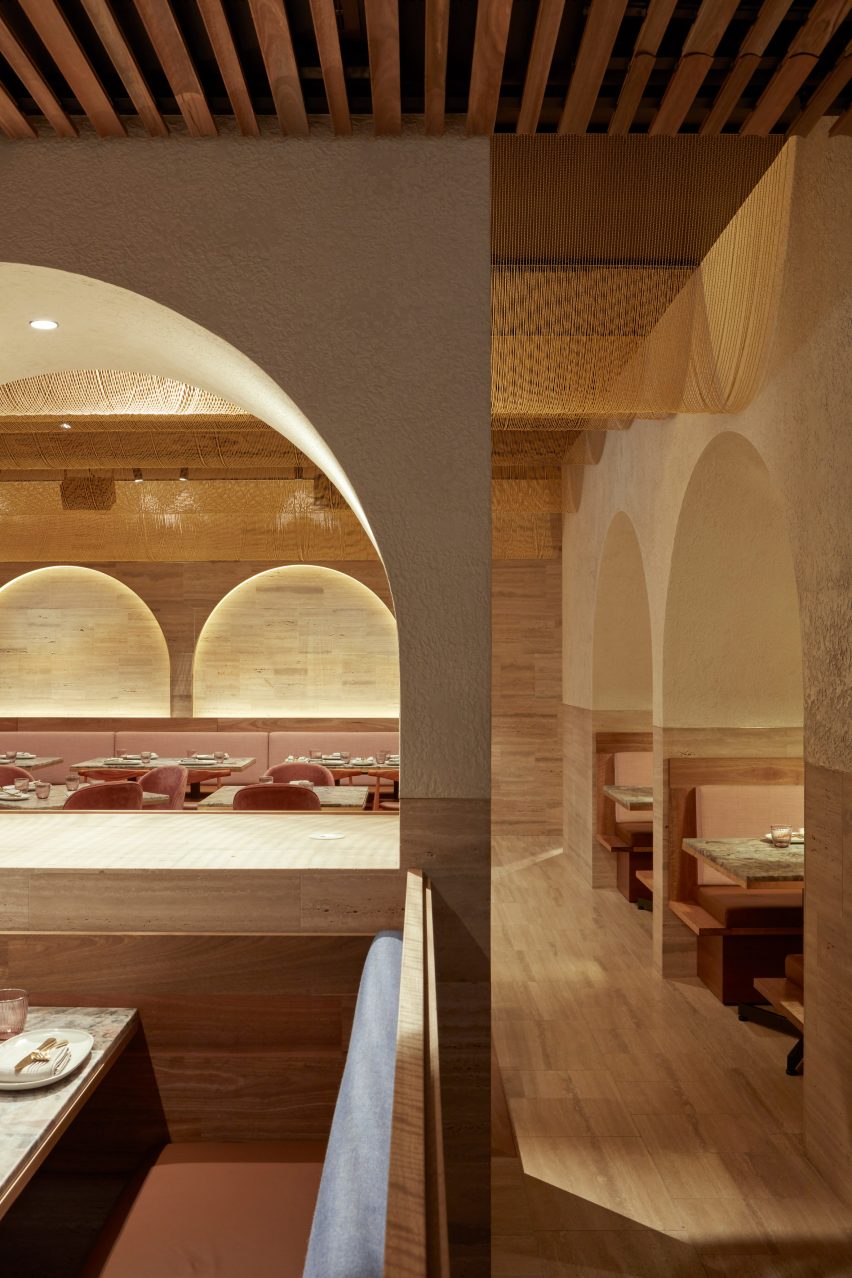
Travertine plinths and vaults all through the design meet the timber parquet flooring, the place the similarities in look had been meant to strengthen the idea of an excavated entity.

John Anthony restaurant by Linehouse is “British tea corridor turned Chinese language canteen”
“An excavation-like model is strictly what we had in thoughts for some areas,” mentioned Lamb. “We’re conscious that Babylon is above a buying centre and so creating that stage of authenticity was at all times going to be a problem.”
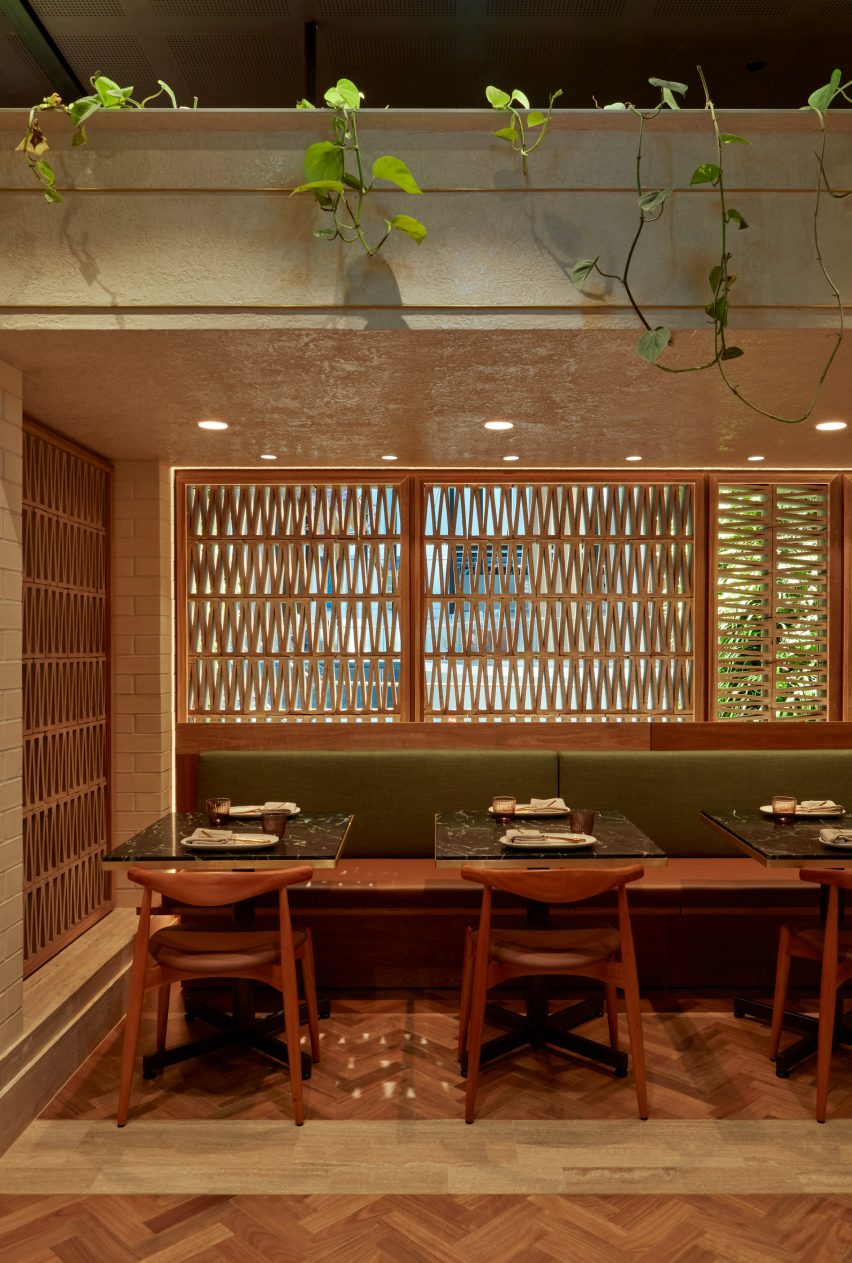
Supplies together with terracotta, clay and pure stone embellish the inside, designed to replicate the outdated Babylonian metropolis landscapes.
“The distinction of historic archetypal references juxtaposed towards refined and opulent finishes ship a feast for the eyes and the urge for food,” continued Lamb.
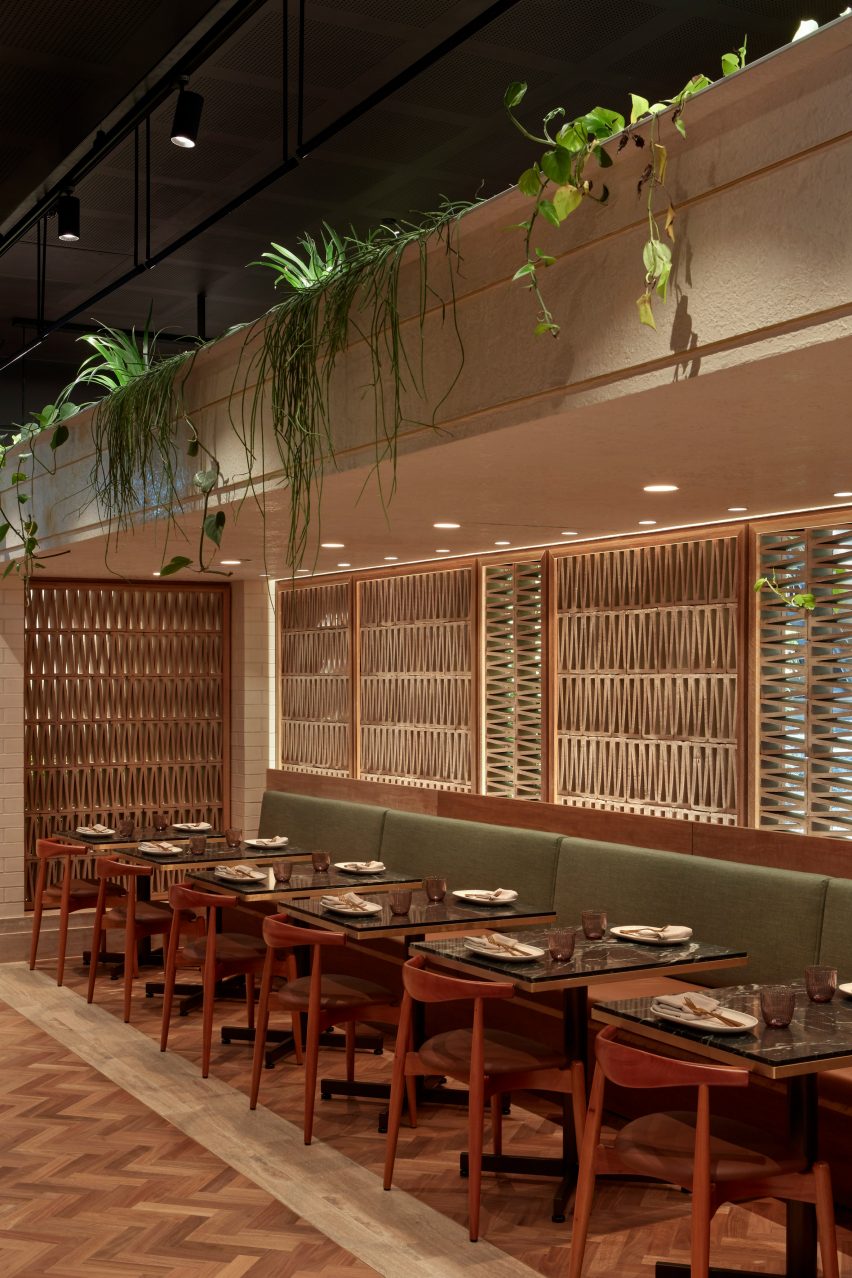
A permeable display screen hand-cut from terracotta blocks stands on the entrance of the restaurant, the place imperfections on the tiles had been adopted by the studio so as to add texture to the facade.
Framed inside a masonry construction, the display screen helps preserve privateness and luxury however allow glimpses to exterior for purchasers eating behind.
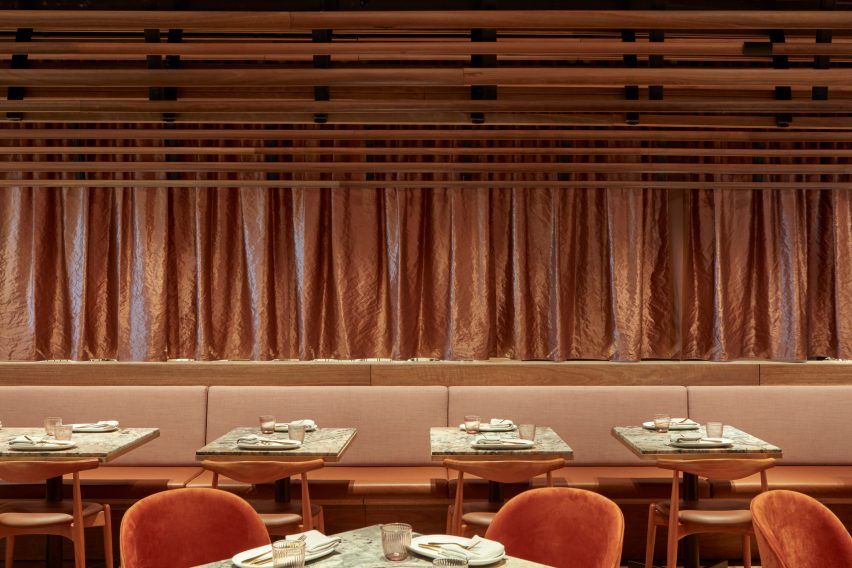
Timber-slatted barrel vaults are suspended from the ceiling within the second eating space, the place the decrease ceiling peak gives extra intimate areas.
Within the bar, wine is saved in a wire body on the northern travertine wall. Seen behind the deliberately spaced out bottles, the stone is left unfinished by the studio to magnify the looks of excavated areas.
Comfortable sheer curtains conceal the remainder of the masonry inside, complementing the comfortable strains of the curved timber vaulting and arches within the house.
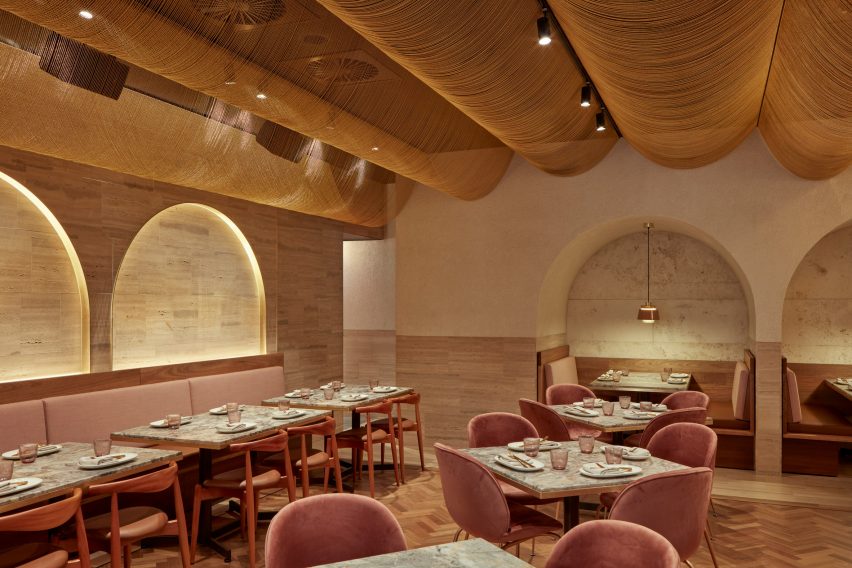
Mesopotamian architectural types had been adopted to tell the technical particulars. Hogg & Lamb selected to make use of easier butt joints to extra subtle mitre joinery, as a “extra trustworthy” development that demonstrates Babylonian traits.
Eating experiences inside the monolithic, cave-like Nikunotoriko restaurant in Tokyo is created by its restricted materials palette, while a bar in Kilkis makes use of arches and exuberant stone detailing to plan a mosaic of areas.
Mission credit:
Architect: Hogg and Lamb
Mission crew: Greg Lamb, Michael Hogg, Lucia Castro Perez, Kasia Jarosz.
Mission administration: Mantle Group
Builder: Xenia
Companies engineer: BSE
Retail design supervisor: Scentre Group
Lighting design: Tim Barry Lighting and Design
Structural engineer: MPN
Stylist: Stewart Highfield